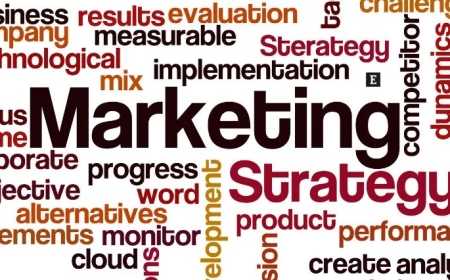Top Trends Shaping the Future of AI Agent Development Solutions
Discover the top trends driving the future of AI agent development, from autonomous systems to cutting-edge tools transforming intelligent automation.

Artificial Intelligence (AI) agents are evolving rapidly, redefining how machines interact with humans and the environment. From autonomous virtual assistants to enterprise automation bots, AI agents are becoming smarter, more autonomous, and more aligned with real-world human needs. As businesses increasingly adopt AI-powered solutions, staying ahead of the emerging trends in AI agent development is crucial for developers, startups, and tech leaders.
In this blog, well explore the top trends shaping the future of AI agent development solutions, highlighting the technologies, practices, and shifts that are setting the stage for the next generation of intelligent agents.
1.Rise of Multi-Agent Systems (MAS)
Traditional AI agents have often operated in isolation, performing specific tasks. However, the trend is shifting toward multi-agent systems, where multiple intelligent agents collaborate to solve complex problems or achieve shared goals.
-
Why it matters: MAS enables division of labor, parallel processing, and specialization among agents.
-
Applications: Autonomous vehicle fleets, decentralized supply chain management, collaborative robotics (cobots), and swarm intelligence in drones.
Example: OpenAIs experiments with multi-agent environments in reinforcement learning showcase how agents can learn social behavior through competition and cooperation.
2.Increased Integration with Large Language Models (LLMs)
AI agents are becoming vastly more capable thanks to the integration of LLMs like GPT-4.5, Claude, Gemini, and others. These models bring general reasoning, natural language understanding, and world knowledge to agents, enabling more dynamic and human-like interactions.
-
Impact: Agents can now understand context, generate human-like dialogue, and perform zero-shot or few-shot tasks.
-
Trend: AI agents built on LLMs are being fine-tuned for specific domains (healthcare, law, finance) to boost relevance and safety.
Future potential: Agents capable of autonomous research, complex planning, and context-aware task execution.
3.Autonomous Agents and Goal-Oriented Planning
Theres a shift from task-based bots (e.g., respond to this message) to autonomous, goal-driven agents that can plan, execute, and adapt their actions.
-
Examples: Auto-GPT, BabyAGI, and LangChain-powered agents can be given high-level goals like "create a business plan" and then autonomously break the task into subtasks and complete them.
-
Key technologies: Planning algorithms, memory components, tool-use capabilities, and long-term context management.
Implication: Developers will build agents that act more like digital employeescapable of decision-making, learning from feedback, and optimizing outcomes over time.
4.Tool-Using and Plugin-Enabled Agents
Another exciting trend is the use of tool-using agentsAI systems that can access external APIs, plugins, databases, and software tools to complete tasks beyond their native capabilities.
-
Why its revolutionary: Instead of pre-programming every possible response, agents can now decide how to complete a task and what tools to use.
-
Examples: Agents using calculators, browsing tools, code interpreters, search APIs, or even image generation tools like DALLE.
Emerging platforms: OpenAI's Function Calling and Assistant API, LangChain, and ReAct-style agents are accelerating this trend.
5.Memory and Personalization Capabilities
AI agents are starting to remember context, preferences, and prior interactions, making them more personalized and useful over time.
-
Techniques: Vector stores, episodic memory, long-context LLMs, and retrieval-augmented generation (RAG).
-
Use cases: Virtual health coaches, educational tutors, and CRM assistants that adapt to individual users over time.
Challenge: Balancing persistent memory with privacy and data retention policies.
6.Hybrid Agents: Combining Symbolic and Neural Approaches
The limitations of purely neural (deep learning-based) models are leading to renewed interest in hybrid AI agents that combine symbolic reasoning with neural networks.
-
Benefits: Better interpretability, logical reasoning, and reduced hallucinations.
-
Example: IBMs Neuro-Symbolic AI framework and Microsofts Semantic Kernel project.
Why this matters: Hybrid agents can follow business rules, reason over knowledge graphs, and provide auditable logic alongside generative capabilities.
7.Edge Deployment and On-Device Agents
Cloud-based agents dominate today, but edge AI and on-device agents are becoming viable due to advances in model compression, hardware acceleration, and private inference.
-
Examples: Agents running on smartphones, wearables, IoT devices, and AR/VR headsets.
-
Benefits: Real-time responsiveness, offline functionality, improved privacy, and lower latency.
Future outlook: Personal AI companions that run on your devices, sync across contexts, and dont need to constantly access the cloud.
8.Safety, Ethics, and Alignment Efforts
As AI agents become more autonomous and influential, ensuring alignment with human values is a growing priority.
-
Trends:
-
Incorporating human feedback (RLHF, RLAIF).
-
Embedding constraints and ethical frameworks.
-
Building transparent decision-making logs.
-
-
Regulatory attention: Governments and organizations are developing AI safety standards and governance frameworks.
Long-term impact: Developers must build agents that are safe by design, auditable, and resistant to misuse.
9.Open-Source Ecosystems and Agent Frameworks
A surge in open-source tools is democratizing AI agent development, making it easier for anyone to build powerful agents.
-
Popular frameworks:
-
LangChain: Composable agents, tool integration.
-
AutoGen (Microsoft): Multi-agent communication framework.
-
CrewAI: Task orchestration with role-based agents.
-
Haystack, Flowise, Semantic Kernel: Modular RAG and agentic flows.
-
Impact: Faster prototyping, community innovation, and reusable agent patterns.
10.Human-Agent Collaboration Interfaces
AI agents are evolving from being passive tools to active collaborators, prompting the rise of new user interfaces and interaction paradigms.
-
Examples:
-
Multi-modal interfaces: speech, image, gesture, and text input.
-
Real-time collaborative UIs: co-writing, brainstorming, live editing.
-
Agent dashboards for monitoring, adjusting, and supervising agents.
-
Emerging UX trend: Agents that think out loud or explain their reasoning as they work alongside humans.
11.AI Agents in Enterprise Workflows
AI agents are rapidly being embedded into enterprise workflowsautomating complex processes across finance, legal, HR, marketing, and IT.
-
Applications:
-
Contract analysis and drafting.
-
Automated incident response.
-
Personalized sales and support bots.
-
-
Trend: Enterprise-grade agents with robust APIs, role-based access, audit trails, and compliance features.
The future: Businesses will deploy networks of domain-specific agents working in sync with human teams.
12.Continuous Learning and Online Adaptation
Static models are being replaced by agents that continuously learn and adapt from interactions, feedback, and new data.
-
Techniques:
-
Online reinforcement learning.
-
Lifelong learning systems.
-
Feedback-driven retraining loops.
-
Implication: Agents will become more accurate, context-aware, and personalized over timewithout full retraining.
Conclusion
The convergence of powerful language models, intelligent orchestration frameworks, tool-use capabilities, and memory systems is ushering in a new era of agentic AI. These arent just botstheyre adaptive, semi-autonomous systems that can act, learn, and collaborate.
As we move forward, developers and organizations must:
-
Embrace modular agent frameworks.
-
Focus on safety, explainability, and control.
-
Prepare for a hybrid workforce of humans and AI agents.
-
Stay agile, as the AI agent ecosystem is evolving rapidly.
The future of AI agents isnt just about automationits about augmentation, where intelligent systems amplify human capability and unlock unprecedented productivity, creativity, and insight.












































